Ano, můžete využít to, co znáte ze zimních sportů, abyste se naučili Snowfeet! Pokud lyžujete, snowboardujete nebo bruslíte, uvidíte, že mnoho věcí, které umíte – jako udržení rovnováhy, používání hran a plynulý pohyb – funguje i se Snowfeet. Pojďme si to rozebrat:
- Lyžaři: Vaše dovednosti v carvingu a přesouvání váhy hodně pomáhají se Snowfeet, ještě více u delších Skiblades. Přesto si zvykání na jejich krátkou délku může chvíli trvat.
- Snowboardisté: Vaše silné používání hran a jádro pomáhají, ale musíte si zvyknout na přechod z jedné desky na dvě brusle.
- Skateři: Vaše skvělá rovnováha a rychlé zatáčky se skvěle hodí k Snowfeet, což usnadňuje jejich zvládnutí.
Rychlé srovnání
| Typ sportu | Dobré stránky | Špatné stránky |
|---|---|---|
| Lyžování | Umí carving a ovládat hrany. | Zvykání si na malé vybavení může být pomalé. |
| Snowboarding | Dobré s hranami a udržením rovnováhy. | Přechod z jedné desky na dvě je těžký. |
| Bruslení | Skvělá rovnováha a rychlé pohyby. | Potřebná jen malá změna. |
Nezáleží na tom, odkud pocházíte, Snowfeet nabízí lehký a zábavný způsob, jak si užít zimní hry. Pokud bruslíte, možná vás zaujmou Mini Ski Skates (140 $). Pokud lyžujete nebo snowboardujete, můžete si vybrat Skiblades (400 $) nebo Skiskates (330 $), protože se více podobají tomu, co znáte. Začněte na jednoduchých kopcích a s tím správným vybavením budete brzy klouzat!
Snowfeet* & Skiskates Tutoriál - Jak se stát PRO Skiskaterem
1. Lyžování
Pokud jste používali staré lyže od značek jako Rossignol, Atomic nebo Head, jste už v dobré kondici, pokud jde o používání produktů Snowfeet. Dovednosti carvingu, které jste si osvojili na dlouhých lyžích, se dobře přenášejí na tyto malé modely a usnadňují učení. Je to jako použít to, co znáte, na jednodušším a snadněji přenosném vybavení.
Rovnováha a kontrola hran
Vaše minulost s rovnováhou na normálních lyžích vám hodně pomůže, když přejdete na Snowfeet. Naučili jste své tělo, jak rozložit váhu a zůstat stabilní při sjíždění kopce. Hlavní změna? Zvykání si na kratší základnu. Snowfeet jsou dlouhé mezi 15 až 47 palci (38 až 120 cm), což je mnohem méně než u normálních lyží, které mají délku od 65 do 75 palců (165–190 cm).
Pro začátek stůjte s nohama od sebe na šířku ramen, mírně pokrčte kolena a nakloňte se trochu dopředu pro lepší rovnováhu. Ovládání hran, které znáte z lyží, se přenáší dobře. Ty carvingové pohyby, ve kterých jste dobří? Stále skvěle fungují na této menší, rychlejší základně. Vaše vrozená schopnost měnit váhu ze strany na stranu vám umožní jistě zvládat zatáčky.
Podobnosti v pohybu a technice
Hlavní pohyby lyžování – jako přesouvání váhy, ovládání tlaku a zahájení zatáček – se skvěle hodí pro Snowfeet. Pokud zvládáte zatáčky vedle sebe na starých lyžích, uvidíte, že to funguje i zde, jen s rychlejší reakcí díky malému designu. Zastavování je podobné, ale musíte si dát pozor, abyste váhu rozdělili na obě nohy, protože je méně prostoru.
Tady je velký rozdíl k poznamenání: Snowfeet Skiblades, často 25 až 39 palců (65 až 99 cm), působí hodně jako staré lyže. Ale Snowfeet Mini Ski Skates, kolem 15 palců (38 cm), nabízejí rychlejší a ostřejší jízdu. Mohou vyžadovat trochu více přizpůsobení, ale vaše lyžařské dovednosti stále tvoří pevný základ.
Univerzálnost terénu
Vaše znalosti o typech sněhu, bezpečných cestách dolů a dobrých rychlostech ze sjezdového lyžování jsou se Snowfeet stejně užitečné. Skutečným vítězstvím je, že Snowfeet jsou skvělé na místech, kde staré lyže působí příliš velké nebo nevhodné. Ať už jste na hladkých svazích, pěších stezkách nebo dokonce blíže domovu, tyto malé lyže nabízejí spoustu různých využití.
Začněte na hladkých svazích, abyste viděli, jak se liší, a pak pomalu přecházejte na tvrdší terény, jakmile se budete cítit jistější. Díky jejich lehkému designu jsou Snowfeet snadno přenosné, což vám umožní prozkoumat místa, kde by dlouhé lyže byly obtížné. Se Snowfeet má vaše zimní zábava najednou více možností.
2. Snowboarding
Pokud jste někdy sjížděli kopec na snowboardu od značek jako Burton, Rossignol nebo K2, budete rádi, že mnoho těchto dovedností dobře funguje se Snowfeet. Dobrá rovnováha a schopnosti ovládání hran, které máte na snowboardu, jsou přesně to pravé, abyste vyzkoušeli tyto malé lyže. Proto může Snowfeet působit jako hladké rozšíření vašeho snowboardingu – perfektní pro zábavnou a rychlou jízdu.
Dovednosti rovnováhy a hran
Časy strávené na snowboardu vám dávají velkou výhodu při zkoušení Snowfeet. Jistota na nohou při přenášení váhy z paty na špičku je dovednost, která se hodí. Velká změna? Jak stojíte. Místo bočního postoje na snowboardu potřebují Snowfeet, abyste stáli čelem vpřed s nohama vedle sebe.
Snowfeet Skiblades vlastně vznikly ze starých snowboardů a jejich cílem je řezat hrany podobným způsobem. Vaše tělo si vzpomene, jak zatáčet a udržet rovnováhu. Protože nyní používáte dvě lyže, ne jednu desku, je dobré začít na lehkých svazích. Navíc můžete nosit své snowboardové boty se Snowfeet díly, což změnu ještě usnadňuje. Jakmile to zvládnete, uvidíte, jak vaše snowboardová rovnováha perfektně zapadá do nových pohybů se Snowfeet.
Jak se pohybujete a dovednosti
Způsoby, jak jste se naučili jezdit na snowboardu, vám také pomohou se Snowfeet. Ale budete pohybovat tělem ze strany na stranu, ne z paty na špičku. Některé typy Snowfeet, jako Skiblades, tento přechod usnadňují díky širokému tvaru, dřevěným částem a koncům, které umožňují pohyb tam a zpět. Je to jako spojení toho nejlepšího ze snowboardingu se zábavou malých lyží.
Schopnost vnímat terén je u Snowfeet také klíčová. Ať už měníte rychlost nebo upravujete pohyby, tyto dovednosti hodně pomohou. A nejlepší na tom je, že u většiny typů Snowfeet můžete zůstat u svých starých snowboardových bot, takže nemusíte brzy investovat do nové výbavy.
Kam můžete vyrazit
Zatímco snowboardy vynikají na hladkých svazích, Snowfeet vám ukážou nová místa. Jsou malé a lehké, snadno je hodíte do tašky, takže můžete vyrazit na lesní cesty, sáňkařské kopce nebo lehké svahy u domu. Různé typy Snowfeet se hodí na různé výlety – Skiblades jsou nejlepší na řezání a triky ve snowparcích; jiné varianty jsou skvělé na túry nebo cesty.
A protože už máte své snowboardové boty, Snowfeet vám umožní vyzkoušet více zimní zábavy bez velkých nákladů. Je to skvělý, jednoduchý způsob, jak rozšířit své schopnosti ve snowboardingu.
sbb-itb-17ade95
3. Bruslení
Pokud jste už někdy bruslili – na ledě nebo kolečkách – jste o krok napřed, když používáte Snowfeet. Bruslařské dovednosti jako udržení rovnováhy, ovládání hran a plynulý pohyb jsou s touto zábavnou sněžnou výbavou snadné. Hokejisté, krasobruslaři a inline bruslaři často cítí, že Snowfeet jsou jako starý přítel, který dává stejný pocit kontroly a svobody.
Rovnováha a kontrola hran
Čas strávený na bruslích vám mohl pomoci lépe udržet rovnováhu a pohybovat se, což je skvělé, když začnete používat Snowfeet. Jak říká Kyle Meagher, hokejista, který miluje Snowfeet:
"Jako hokejista jsem měl opravdu pocit, že jsem zpátky na ledě!"
Kovové části na Snowfeet jsou jako čepele na ledních bruslích. Umožňují vám tvarovat zatáčky a dobře zvládat rychlost. Naučili jste se, jak přenášet váhu a udržovat rovnováhu na bruslích? To vám pomůže rychle a jistě se přizpůsobit zde.
Jak se pohybovat a podobné techniky
Jedna skvělá věc na Snowfeet je, že bruslařské pohyby fungují taky. Boční odraz nohama, který vás na bruslích žene rychle vpřed? Používá se tady stejným způsobem. A pokud umíte rychle zastavit v hokeji, zjistíte, že je snadné ovládat rychlost na Snowfeet. Stačí stát klidně a rovnoměrně. To dělá zastavování a zatáčení snadné a přirozené.
Ally z Indy, která miluje kolečkové bruslení a snowboarding, nám řekla, co si myslí:
"Jsem snowboardista a nebyl jsem si jistý, ale rozhodl jsem se je vyzkoušet, protože mou první láskou je kolečkové bruslení. Tyto jsou skvělé! Zůstal jsem na bunny v Keystone a rychle jsem si na ně zvykl."
Tato snadná kombinace znamená, že můžete přeskočit těžký začátek a rovnou skočit do zábavy na sněhu.
Mnoho způsobů, jak si hrát
Vaše dovednost v bruslení nejen pomáhá držet krok a pohybovat se – otevírá také spoustu míst pro zábavu. Rychlé pohyby a rychlé zatáčky, které jste dělali na bruslích, se skvěle hodí pro průchod úzkými lesy, pohyb v snowparcích nebo dokonce sjíždění kopců. Malá konstrukce Snowfeet, dost malá na to, aby se vešla do tašky, vám umožní putovat tam, kde je sníh.
Navíc menší velikost vám umožňuje snadněji dělat triky, skoky a otočky – dovednosti, které lyžařům mohou trvat roky, než je zvládnou. Pro tvrdý sníh Snowfeet PRO, dlouhé 50 cm a za 230 dolarů, poskytují lepší držení na volném a nerovném terénu, přičemž si zachovávají pocit ze skákání. Je to jako mít to nejlepší z obou světů: volnost bruslení a velkou radost ze sněhu.
Dobré a špatné
Pokud znáte zimní sporty, může vám to pomoci dobře začít se Snowfeet. Ale má to i své těžké stránky. Podívejte se, jak to, co umíte, zapadá do Snowfeet. To vám pomůže dobře využít své dovednosti a zvyknout si na pocit z tohoto vybavení.
| Sportovní zázemí | Výhody | Nevýhody |
|---|---|---|
| Lyžování | • Dobrá rovnováha vpředu a vzadu a využití hran. • Znalost carvingových zatáček pomáhá při používání krátkých, rychlých modelů (jako jsou Skiblades v délkách 65 cm nebo 99 cm). |
• Přechod z širokého lyžařského postavení na úzké vyžaduje čas. • Je třeba se naučit nové způsoby zatáčení s kratším vybavením. |
| Snowboarding | • Silná boční rovnováha a cit pro hranu. • Dobrá síla středu těla z jízdy ze strany pomáhá při ovládání dvou Skiskates. |
• Musíte se naučit ovládat dvě Skiskates, ne jen jednu desku. |
| Bruslení | • Špičková rovnováha a dovednosti v držení hrany dobře fungují se Snowfeet. • Zvyk na rychlé změny směru pomáhá při adaptaci. |
• Potřebujete málo změn – většina bruslařských schopností se dobře přenáší. |
Tyto myšlenky ukazují, že vaše minulost může ovlivnit, jak se vám bude dařit na Snowfeet, a pomoci vám být úspěšní na svazích.
Začínáme se Snowfeet
Konstrukce Snowfeet využívá vaše předchozí zimní sportovní dovednosti, aby vám pomohla. Lidem, kteří bruslí, přechod usnadňuje, protože už umí udržet rovnováhu a rychle se pohybovat, což odpovídá způsobu, jak Snowfeet fungují. Lyžařům se nejvíce líbí typy, které vypadají jako staré lyže. Jak řekl jeden dlouholetý uživatel:
"Pokud jste normálně lyžař, pořiďte si SKISKATES. Nemají žebra a působí více jako lyže (tedy můžete 'driftovat' v zatáčkách)" – Logan @xskyskaterx
Dobré využití vašich dovedností
Snowfeet mají délku mezi 38 a 120 cm, což je kratší než běžné lyže (často 150–180 cm). To znamená, že musíte upravit způsob zatáčení a ovládání rychlosti. Ti, kdo jezdí na snowboardu, si možná budou muset zvyknout na dvě Skiskates místo jedné desky. Aby vám to šlo co nejlépe, vyberte si správné vybavení: lyžaři často preferují známý pocit SKISKATES (330 $) a bruslaři si dobře vedou se Snowfeet Mini Ski Skates (140 $).
Konec
Pokud milujete zimní hry, budete rádi, že pokud je zvládnete, můžete používat i Snowfeet. Především mají bruslaři výhodu. Rychlé pohyby a dobrá rovnováha z bruslení dobře ladí s tím, jak Snowfeet fungují. Jak říká Snowfeet FAQ:
"Musíte udržovat rovnováhu vpřed a vzad, takže to působí velmi přirozeně pro ty, kteří hrají lední hokej, bruslí na ledě nebo dokonce používají inline brusle." – Snowfeet FAQ
Pro lidi, kteří hrají hokej, bruslí na ledě nebo na kolečkových bruslích, je používání Snowfeet snadné. Jsou krátké, asi 17 palců dlouhé, podobně jako mini lyžařské Skiskates. To dělá ze Snowfeet skvělou volbu pro každého, kdo umí používat brusle.
Lyžaři mají Snowfeet také rádi. Pokud umíte lyžovat s velkými značkovými lyžemi od výrobců jako Rossignol nebo Atomic, bude se vám líbit, jak vám Snowfeet umožňují udržet postoj čelem vpřed a roztáhnout nohy, jak jste zvyklí. Přechod z dlouhých lyží 59–71 palců na tyto krátké může ale chvíli trvat. Možná budete chtít začít se Skiskates (za cca 330 $), protože ty působí více jako normální lyže.
Snowboardisté to mají ze začátku těžší. Přechod z jedné velké desky na dvě malé Skiskates není snadný, i když jste velmi dobří v udržení rovnováhy. Ale jejich dovednosti v držení hrany a pohybu ze strany na stranu jim časem pomáhají, takže je to dobrý krok.
Takže jaké vybavení Snowfeet byste měli získat? Pokud jste skater, vyberte si Mini Ski Skates (140 $). Lyžaři mohou ocenit Skiskates (330 $) pro snadnější start a snowboardisté by mohli zvolit delší 25-inch Skiblades (400 $). Ať už si vyberete cokoli, noste boty, které dobře drží kotníky, a udržujte své vybavení navoskované pro nejlepší zážitek.
Často kladené otázky
Můžete se naučit používat Snowfeet, pokud lyžujete, snowboardujete nebo bruslíte?
Pokud umíte lyžovat, snowboardovat nebo bruslit, jste na správné cestě, jak se naučit používat Snowfeet. Tyto zábavné aktivity vás učí udržet rovnováhu, pohybovat se snadno a ovládat své pohyby – skvělé dovednosti pro zvládnutí speciální konstrukce Snowfeet. Skaters ocení, jak jsou malé a rychlé, schopné rychle zatáčet. Lyžaři zjistí, že vědět, jak se naklánět a přenášet váhu, opravdu pomáhá při sjíždění kopců se Snowfeet.
Velkou výhodou Snowfeet je, že jsou lehké a snadno se nosí. Umožňují zábavu na sjezdovce bez nutnosti tahat těžké lyže nebo snowboardy. Ať už začínáte nebo jezdíte roky, Snowfeet vám dávají skvělý a jednoduchý způsob, jak se zlepšit a užít si víc zábavy na sněhu.
Jak přechod ze snowboardingu na Snowfeet mění váš způsob jízdy?
Přechod ze snowboardingu na Snowfeet vyžaduje trochu doladit svůj styl. Na rozdíl od bočního postoje na snowboardu, Snowfeet vás postaví čelem vpřed, víc jako při lyžování. Tento posun mění, jak udržujete rovnováhu a rozkládáte váhu, takže budete muset změnit, jak se nakláníte a pohybujete při zatáčení a zastavování.
Když zatáčíte se Snowfeet, je to víc na dotek než zatáčení na snowboardu. Místo použití stran a délky prkna teď zatáčíte jasnými pohyby nohou a nakláněním těla – podobně jako při bruslení nebo lyžování. Zastavování je také jiné. Snowfeet jezdci často používají zastavení jako na bruslích, například hokejový stop nebo klín, ne jen spoléhat na strany k zpomalení.
Jistě, může to chtít pár pokusů, než se to naučíte dobře, ale to je součást radosti. Snowfeet dávají zimní zábavě nový rozměr, umožňují pohybovat se volněji a rychleji, než jaký snowboard dokáže.
Jaký je nejlepší Snowfeet produkt pro někoho, kdo bruslí a chce vyzkoušet zimní zábavu?
Pokud umíte bruslit a chcete se ponořit do zimní zábavy, Snowfeet PRO může být to, co potřebujete. Kombinuje bruslení a lyžařské pohyby, takže je skvělý pro skaters. Promění vaše běžné boty v cool mini skiskates!
Díky lehkému pocitu a snadnému nastavení vám Snowfeet PRO umožní pohybovat se po sněhu stejně jako na skates. Funguje pro nové i zkušené jezdce a slibuje živý a zábavný čas na sněhu.






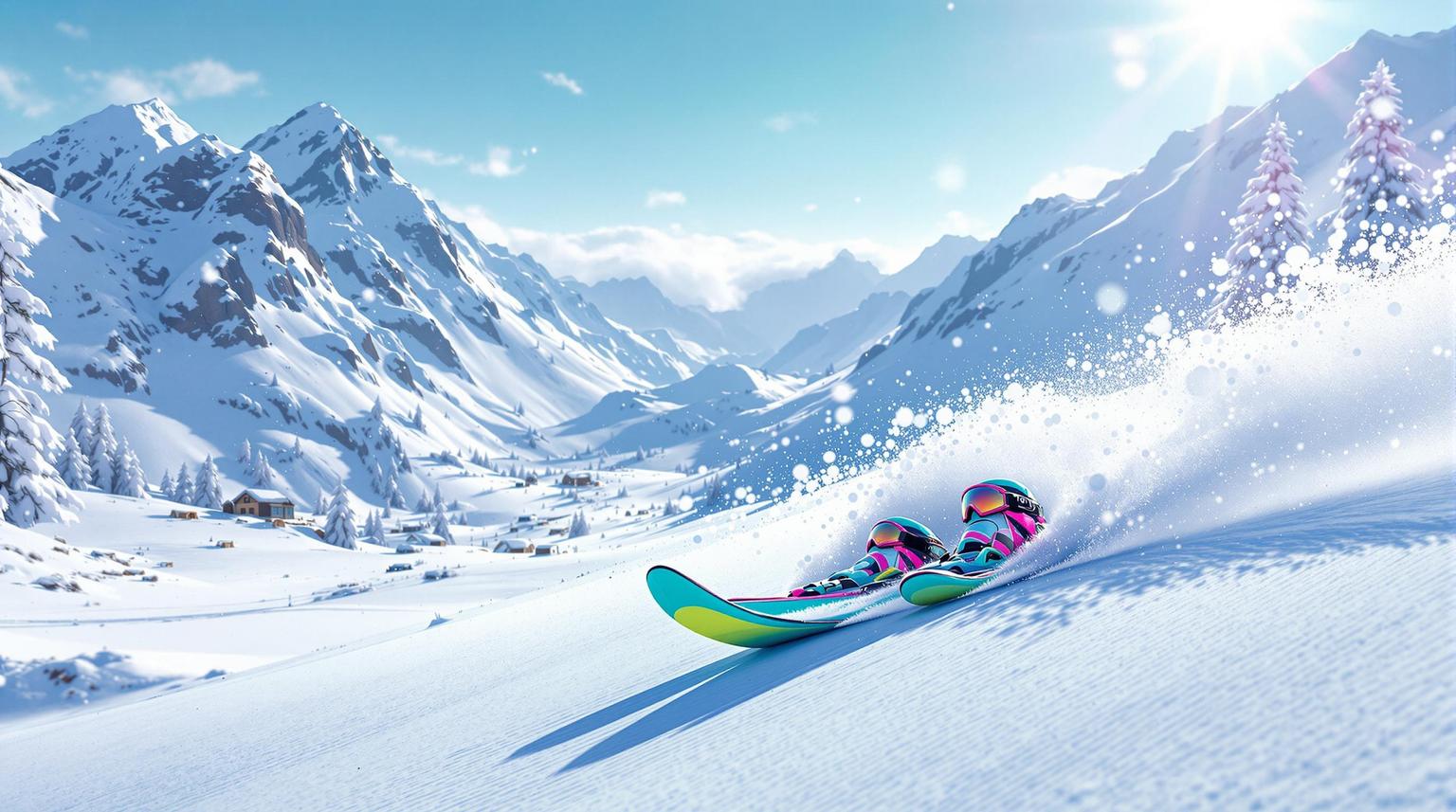
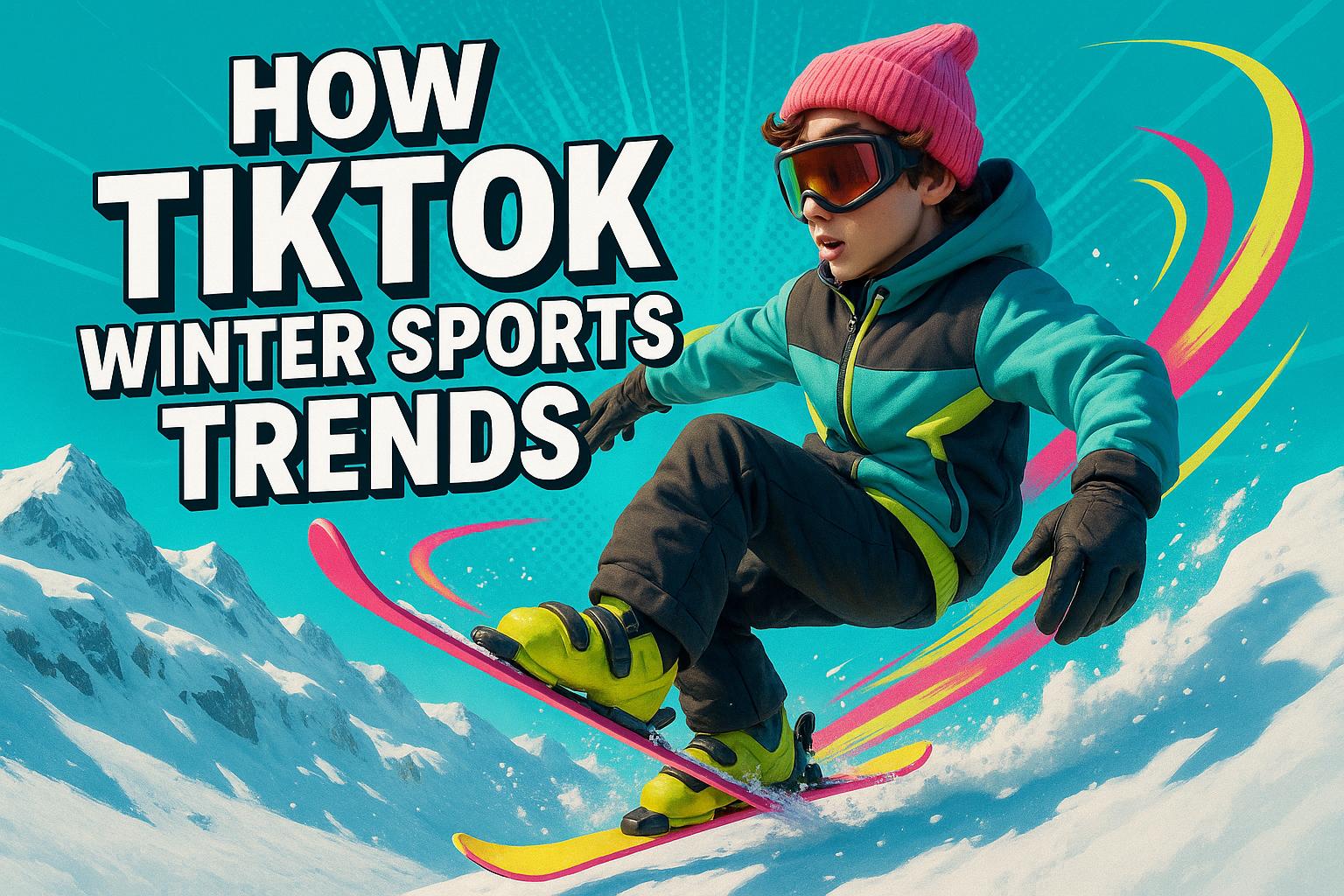
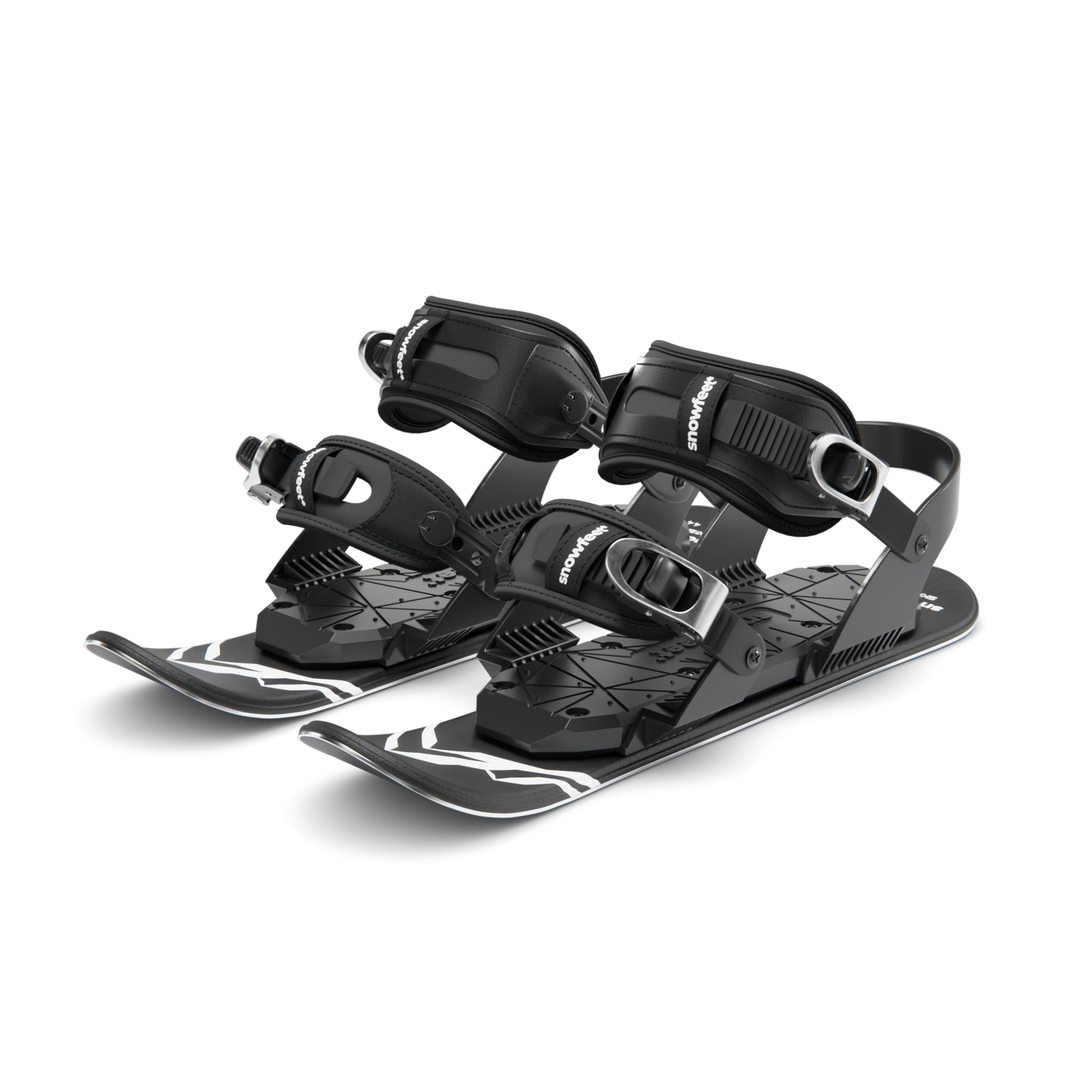

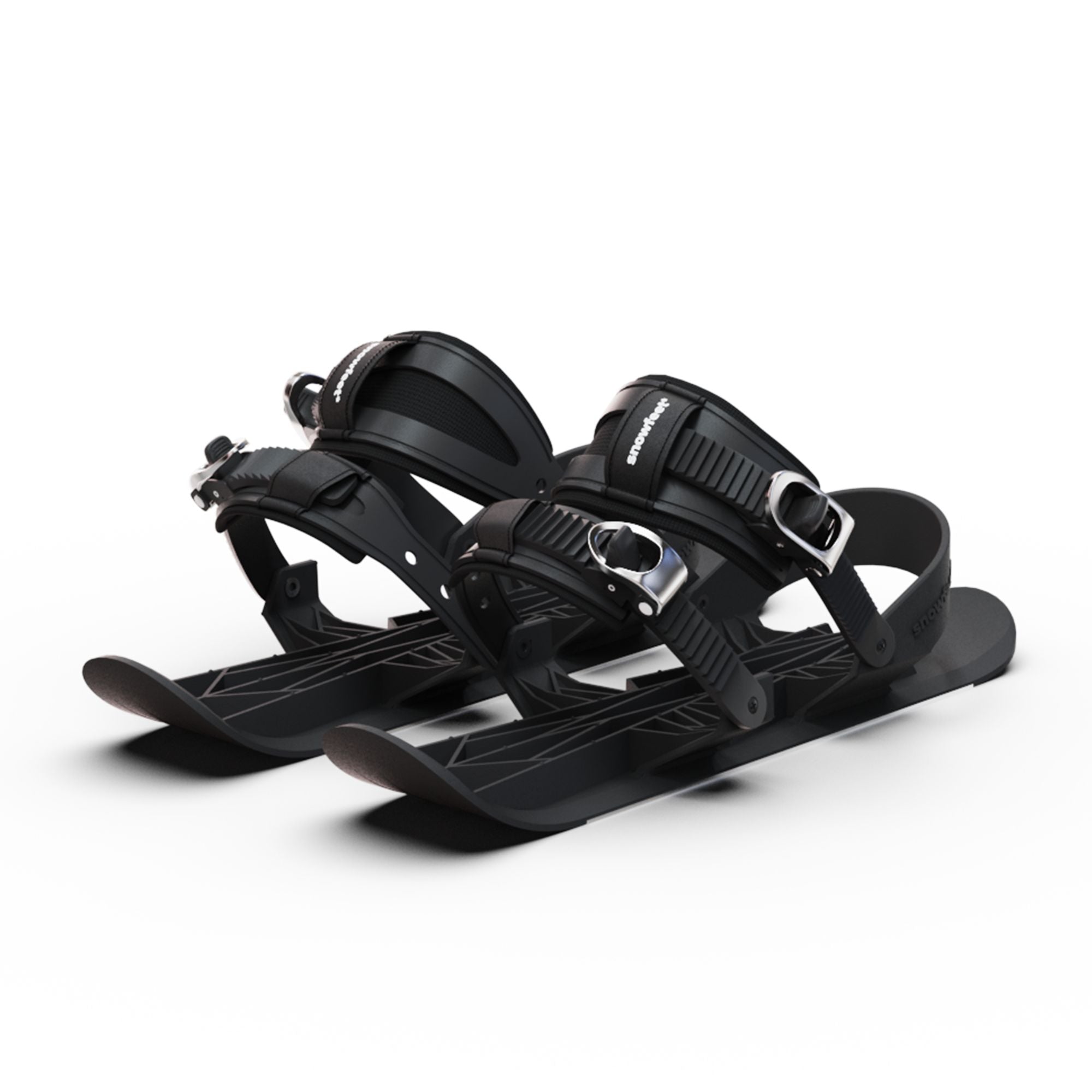
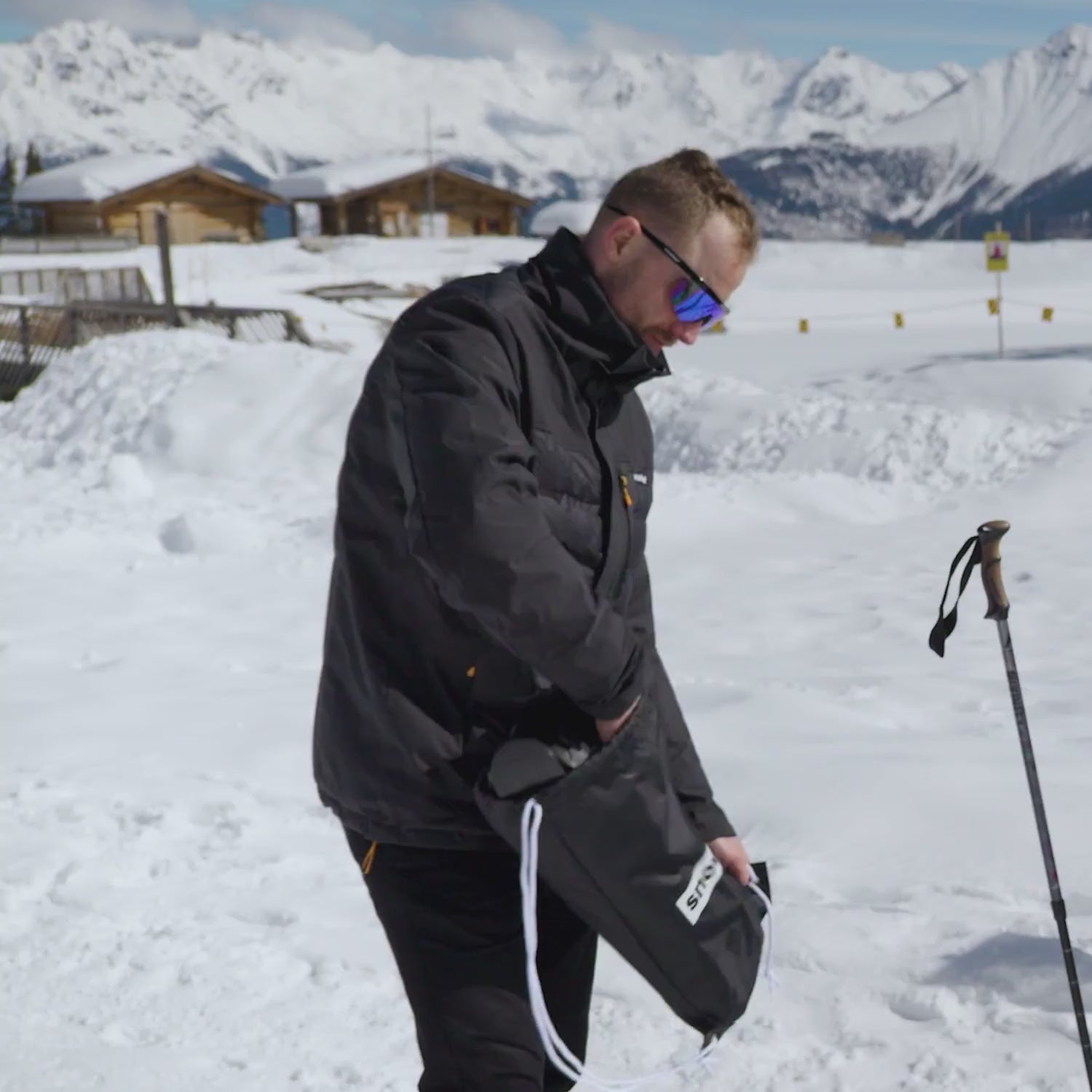
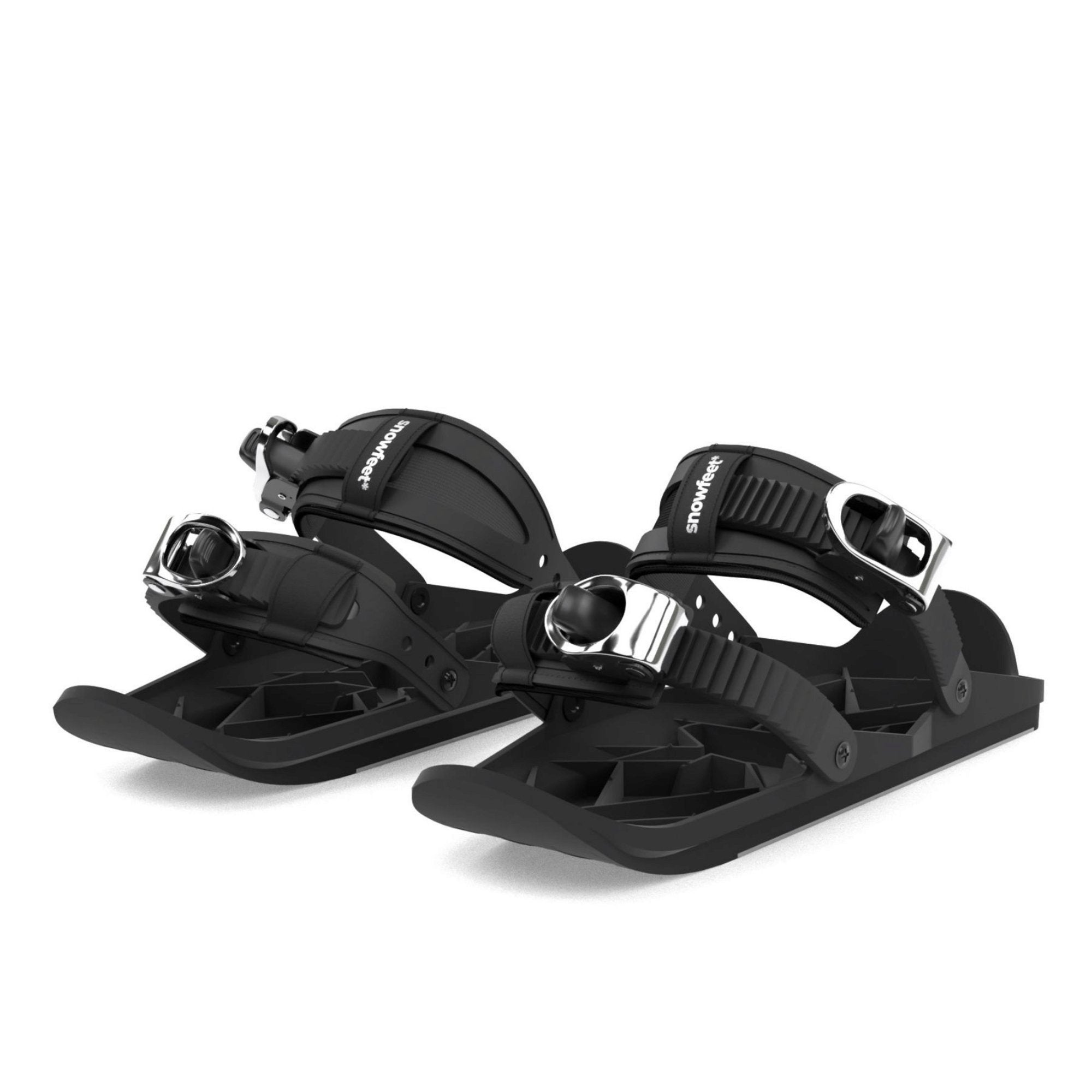
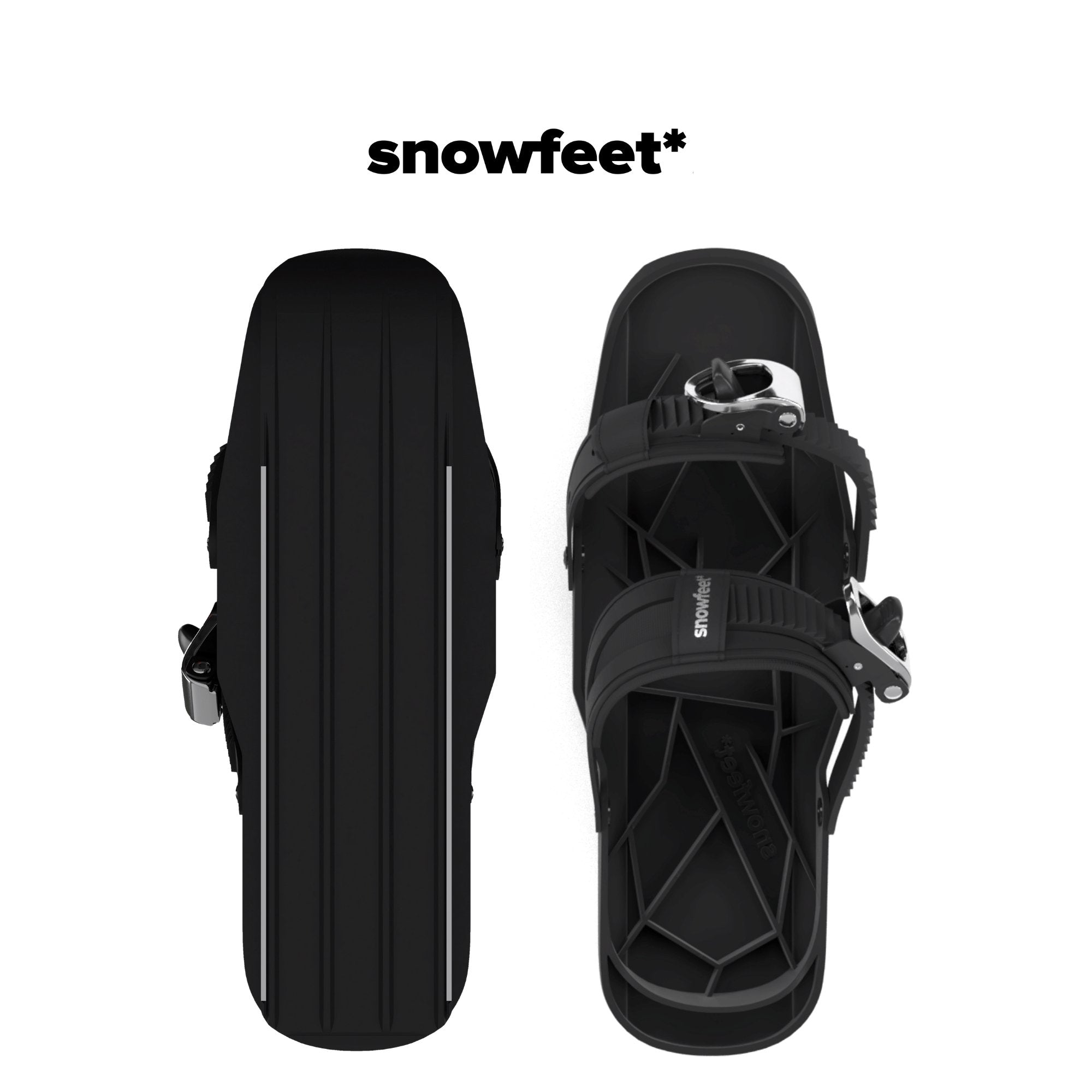
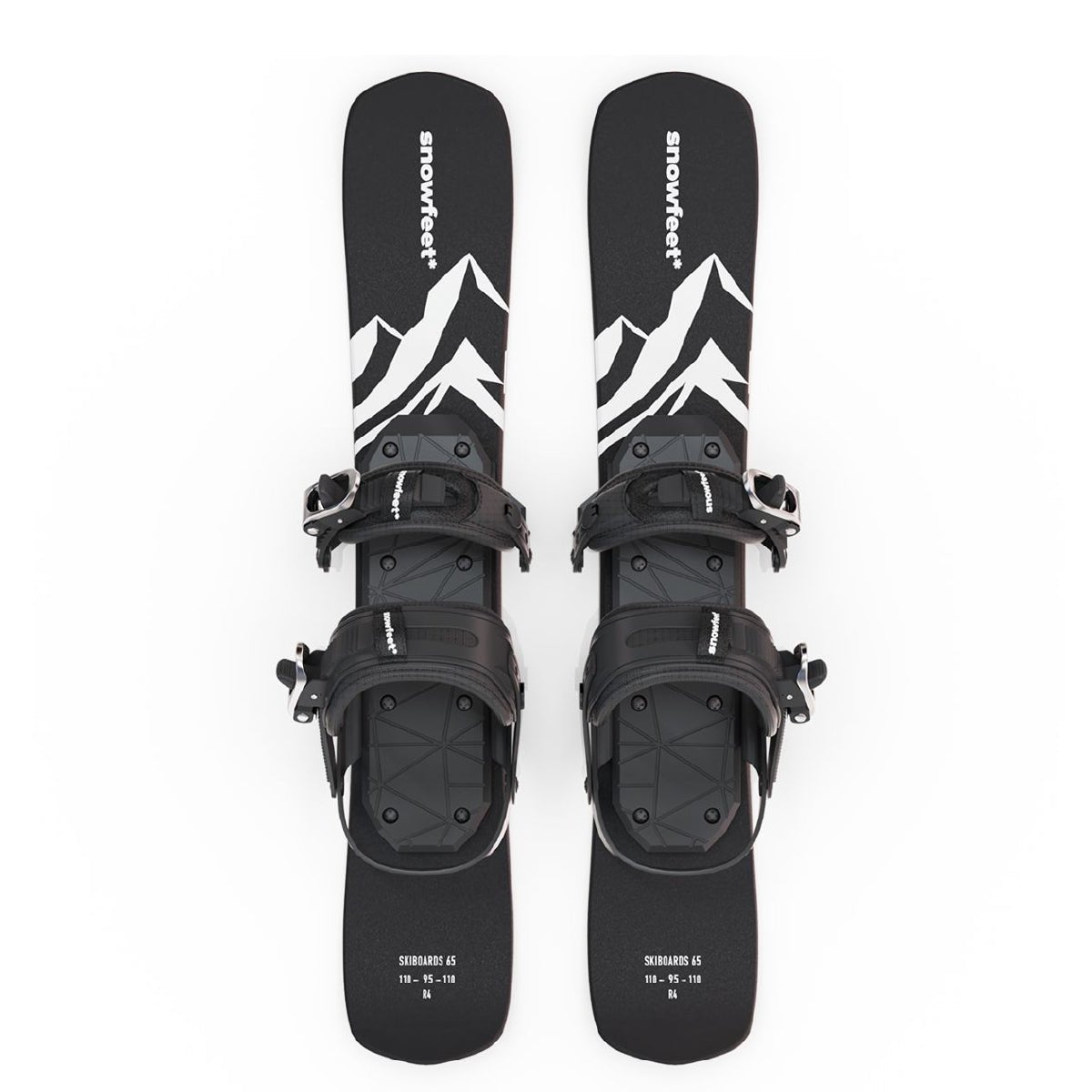
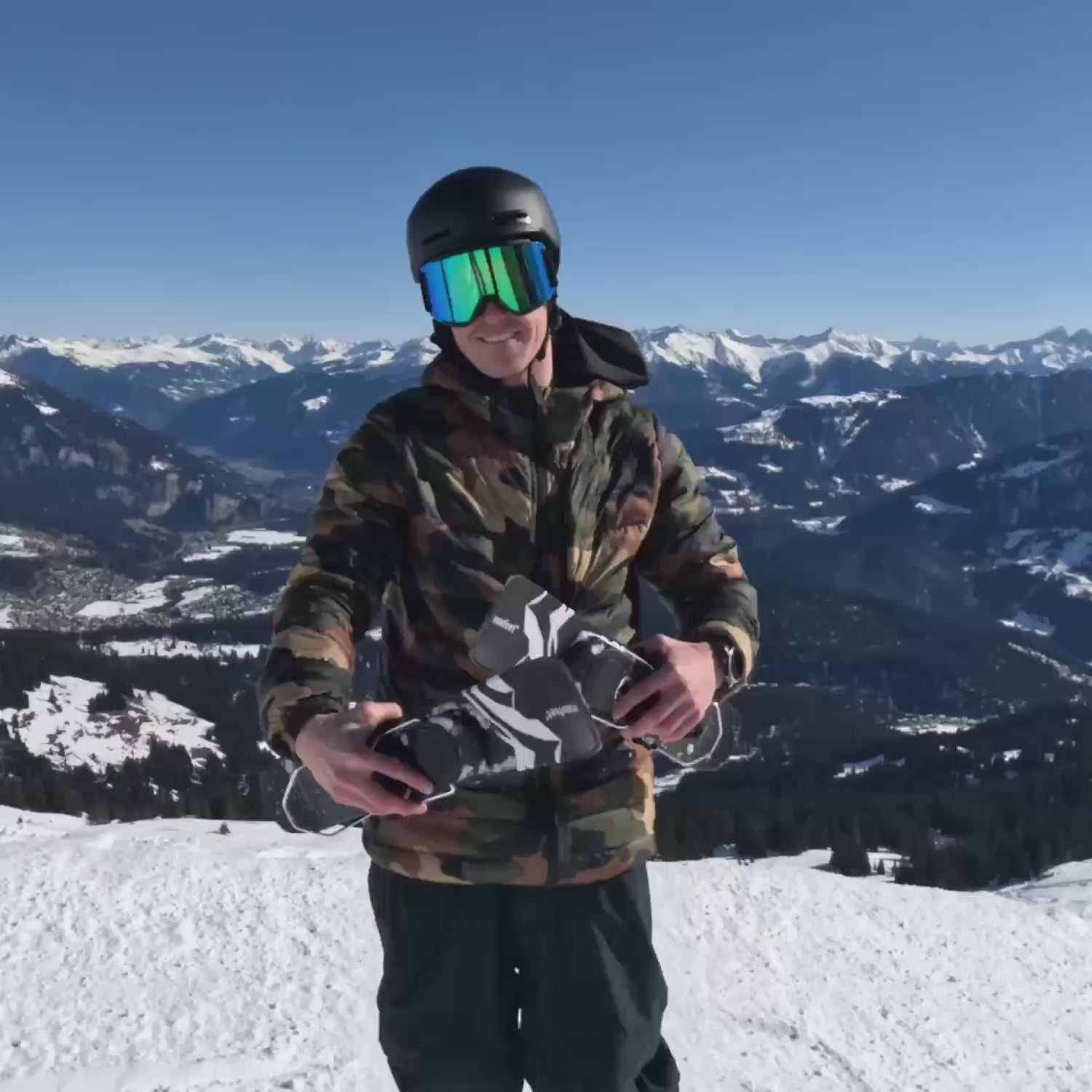
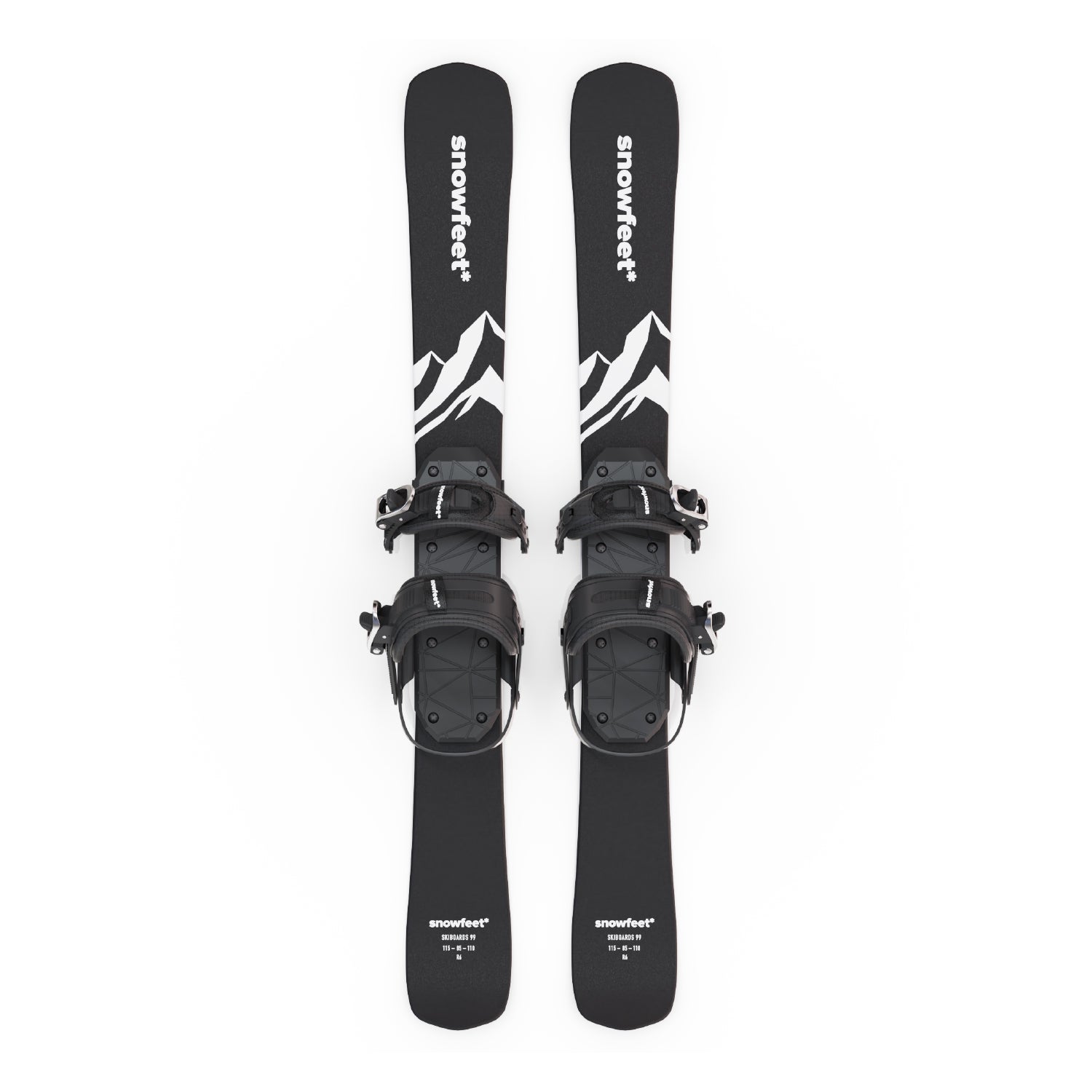
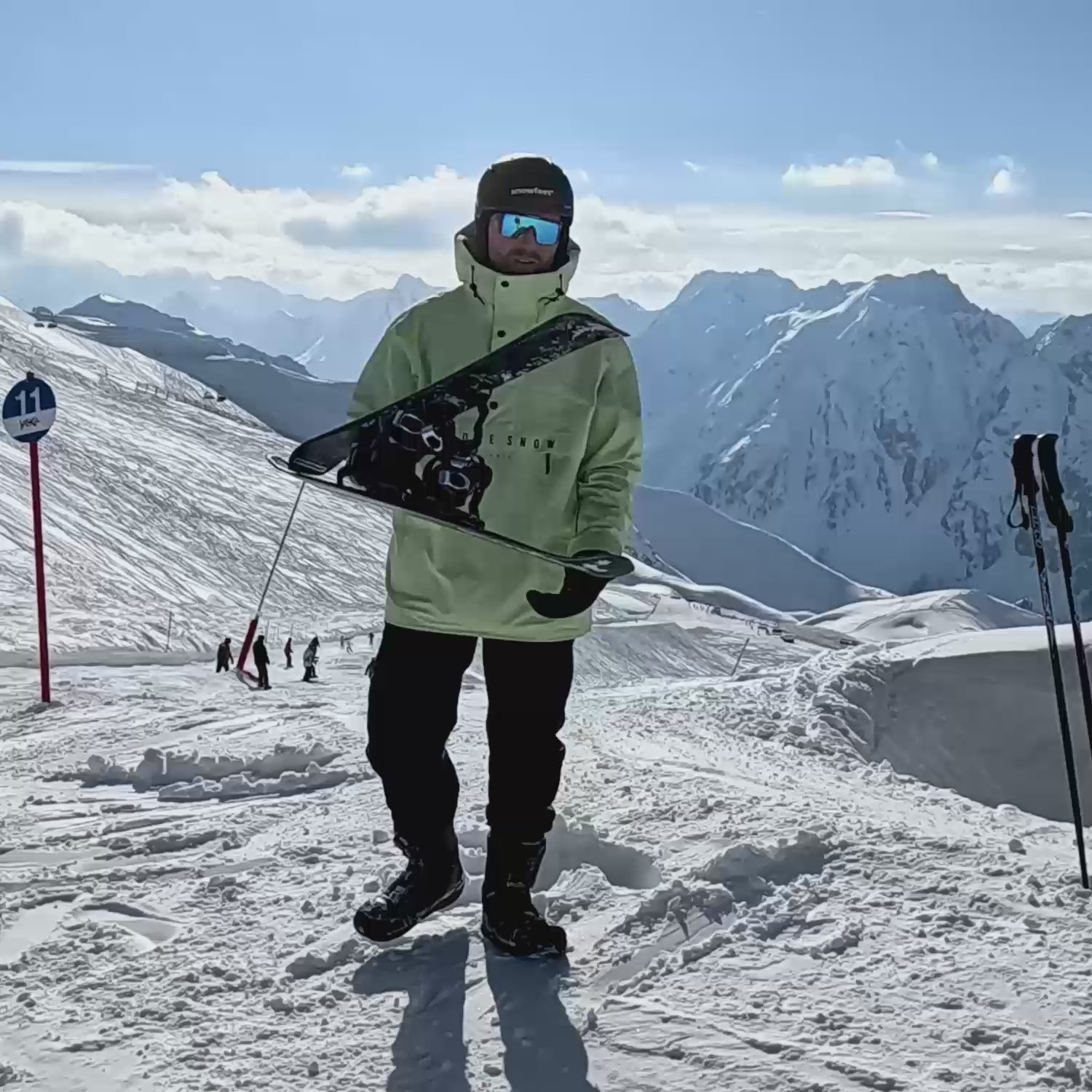
Zanechte komentář
Tento web je chráněn službou hCaptcha a vztahují se na něj Zásady ochrany osobních údajů a Podmínky služby společnosti hCaptcha.